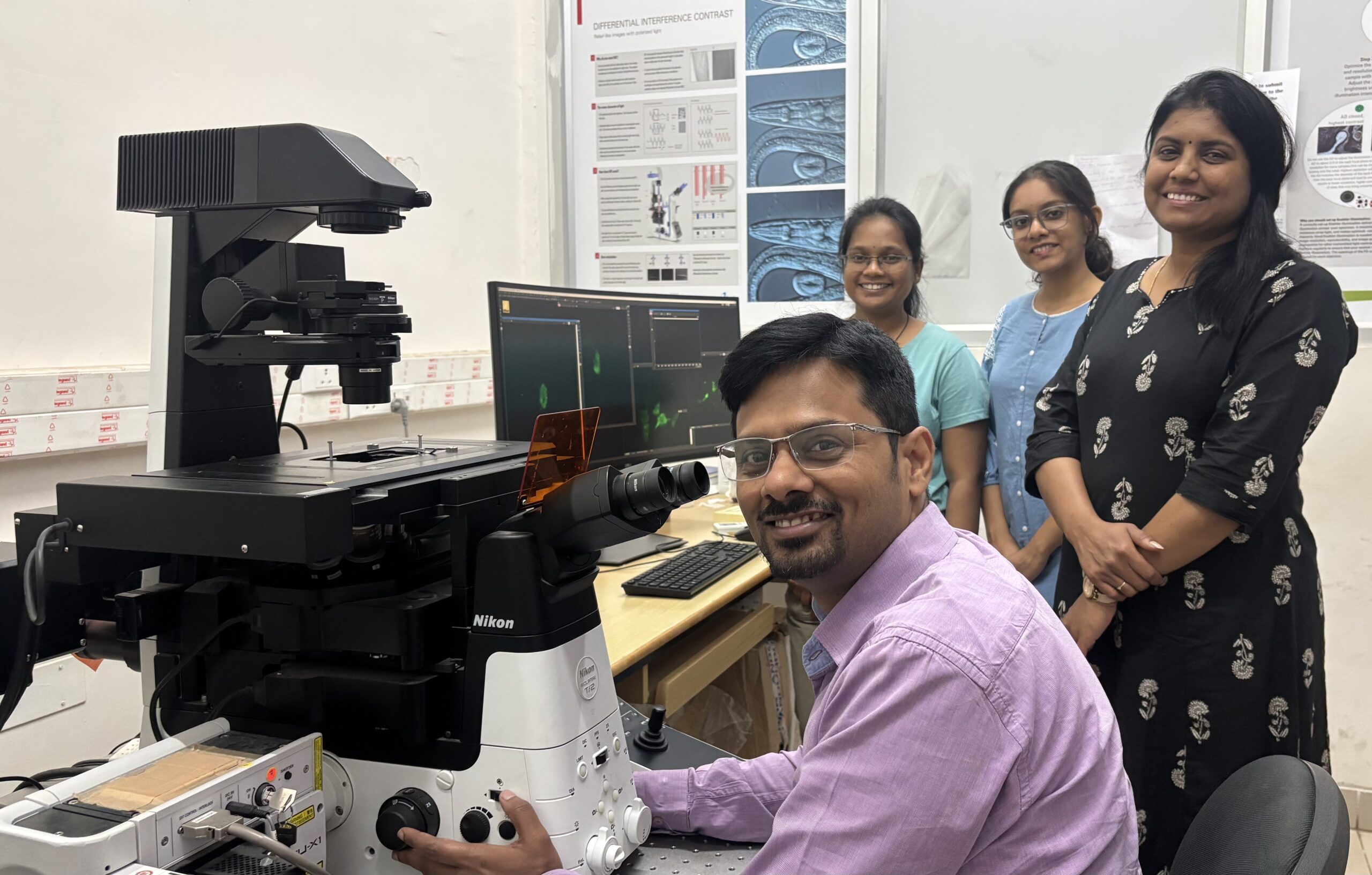This new study suggests that improving glucose entry into the pancreas itself could be another way to slow down or even prevent worsening diabetes.
Published Aug 19, 2025 | 9:22 PM ⚊ Updated Aug 19, 2025 | 9:22 PM

From left to right: Nikhil R Gandasi, Anuma Pallavi, Nagapriya K Arunkumar, Lakshmi Kothegala (Credit: Abhishek Pawar)
Synopsis: A team of scientists at the Indian Institute of Science uncovered what goes wrong with insulin production and how fixing it could open new doors to treatment. This new study suggests that improving glucose entry into the pancreas itself could be another way to slow down or even prevent worsening diabetes.
Picture Bengaluru’s traffic during rush hour: Vehicles inching forward, honking in frustration, and traffic signals struggling to cope. Now replace cars with glucose molecules after a heavy meal, and you’ll see how our body also faces a traffic problem. When things run smoothly, glucose enters special cells in the pancreas, triggering the release of insulin to balance blood sugar. However, in type 2 diabetes, this traffic system falters.
A team of scientists at the Indian Institute of Science (IISc) Bengaluru uncovered what goes wrong — and how fixing it could open new doors to treatment.
Their study, led by Dr Nikhil Gandasi, Assistant Professor in the Department of Developmental Biology and Genetics, was recently published in the prestigious journal Proceedings of the National Academy of Sciences (PNAS).
Normally, tiny “gatekeeper” proteins called glucose transporters (GLUTs) rush to the surface of pancreatic cells whenever blood sugar rises. They act like flyovers, letting glucose enter the cells quickly and efficiently.
Once glucose gets inside, insulin is released into the bloodstream, helping the body use or store sugar.
However, in people with type 2 diabetes, this gatekeeping system breaks down. Fewer GLUTs make it to the cell surface, and they don’t move back and forth as actively as they should. This means less glucose gets in, and insulin release slows down – much like a traffic jam where too few lanes are open.
“Most studies have looked at what happens after glucose enters the pancreatic cells,” explained Anuma Pallavi, PhD student and first author of the paper, in a press release.
“We focused on the step before that – the entry of glucose itself – and how this is disrupted in diabetes. By understanding the dynamics of these transporters, we can identify new points to intervene and improve B-cell function,” she added.
Current diabetes drugs focus on helping insulin work better in tissues like muscle or fat. This new study suggests that improving glucose entry into the pancreas itself could be another way to slow down or even prevent worsening diabetes.
Interestingly, Gandasi’s lab has earlier shown that a plant-based molecule called Pheophorbide A can help boost insulin release by interacting with glucose transporters – hinting at possible future therapies.
“If we can restore proper GLUT movement inside cells, we may be able to slow down disease progression and personalise treatment for patients,” said Gandasi.
For millions living with diabetes, this could mean not just smoother traffic on the city’s roads, but inside their own bodies as well.
(Edited by Muhammed Fazil.)
